APPLICATION
Confectionery
Chocolate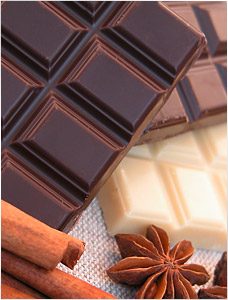
Chocolate is a complicated disperse system with sugar crystals and cocoa particles dispersed in a continuous cocoa butter matrix. The phospholipids in lecithin attach to the hydrophilic surface of sugar and cocoa because of their bipolar molecular structure and reduce in such a way the internal friction between the solid particles of the chocolate mass. In consequence viscosity and yield point are reduced, thus saving expensive cocoa butter. As a rule of thumb it can be said that 0.5 % lecithin addition can save approximately 6 % of cocoa butter.
Chewing Gum
Lecithin addition to the gum base makes it better machineable because of its positive influence on the rheology of the base. Lecithin prevents the final gum from drying out and contributes to a longer lasting flavour release. In terms of taste and texture a 2 months old chewing gum without lecithin can be compared with a 6 months old gum containing 0.3 % of lecithin.
Ice Cream Coating
For ice cream coating a phosphatidylcholine (PC) enriched fraction is the product of choice. Lecithin maintains a low and stable viscosity of the coating mass even at slightly increasing moisture content during the coating process. This leads to reproducibly thin coating and helps saving coating mass. In consequence cracking of the coat because of too high thickness and the formation of ice crystals is prevented
Caramels and Gums
In soft caramels, fudges, toffees and gums not only viscosity is important but fat distribution and stickiness must also be considered. The anti-sticking effect of lecithin is wellknown in products where sugar and water are present. Lecithin avoids the increase of moisture at the surface of the product and prevents the recrystallization of the sugar. The emulsifying properties of the lecithin achieve a fine and homogeneous distribution of the fat.
Bakery
Bread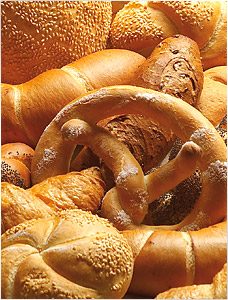
Lecithin improves the extensibility of the gluten, which has an impact on various aspects of the baking process. It improves the machineability of the dough, stabilizes the fermentation process as the dough becomes less porous, and improves gas retention which results in an increased loaf volume and a more uniform crumb structure. Additionally, lecithin interacts with the wheat starch, delaying retrogradation of the amylose, and improves water binding that result in a longer shelf life.
Biscuits and Wafers
The quality of biscuits, wafers and other pastry products is improved by adding lecithin as it assures: a better homogenization of the different ingredients; a better emulsification of the fat; improved water binding. This results in better cohesion and a more uniform browning of the product. It will also reduce breakage. Wafers can be more easily removed from the waffle irons. The nutritional quality of the biscuit and wafer is also improved due to the reduction of fat and oil. Because of the emulsifying properties, fat is more evenly distributed which results in a more efficient use of the fat or oil.
Frozen Doughs
In deep frozen doughs, lecithin improves the freezing and thawing stability. The growth of large ice crystals is inhibited. This reduces mechanical damage of the dough gluten network and protecting yeast cells.
Paint & Coating
Lecithin plays a growing role in the chemo-technical industry because of the 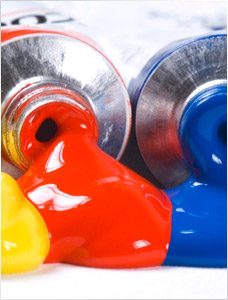 growing environmental awareness of the people and the increasing need for biodegradable substances.
growing environmental awareness of the people and the increasing need for biodegradable substances.
Leather and Textiles
It is used both for soothing and softening of textile but also in leather tanning as natural dispersant. A very specialised application is for textile dying where lecithin is used to encapsulate the textile dye in liposomal form, thus to have a more efficient dying and to avoid high waste water burden because of inefficient binding of the dye to the textile fibre.
Paint and Inks
Paints and inks are pigments dispersed in a solvent or water. Lecithin is used to improve the dispensability characteristics of the pigments resulting in more even distribution of the pigments. Lecihtin is also a good release pr parting agent. The polar groups tend to bind on metallic surfaces and the nonpolar fatty acids act as slipping agent. Therefore is improves adhesion of the coat by ensuring good wetting of the base and prevents surface flaws due to optimum pigment packing.
Industrial Microbiology
Industrial microbiology is applied to the production of chemicals as well in the field of wastewater treatment and mining. For the cultivation an excellent nutrient for the fermentation process is required. Lecithin is such a micro-nutrient. Soil polluted with petroleum can be remedied by lecithin, used as an emulsifier, dispersing and increasing the digestabilty of the petroleum by microorganism.
Plant Protection
Final products for plant protection are normally marketed as emulsions in concentrated form. They contain active biocides ingredients, emulsifier, organic solvents and oil. Lecithin increases the efficiency of biocides resulting in lower dosage of toxic active ingredients, reducing the burden on the environment. In addition it enables to get stable aqueous emulsions and improve dispersion of the active ingredients.
Cosmetic Industry
Lecithin in Cosmetic Preparations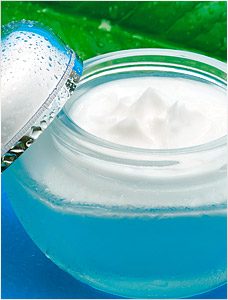
Lecithin is widely used for the production of an extensive range of cosmetic products like creams, lotions, soaps, hair shampoo and decorative cosmetics such as lipstick.
Commercially, phospholipids are extracted from lecithin. Soybeans are predominantly used as raw material but sunflower, rapseed, eggs or milks are quite interesting due to their various types of phospholipids and fatty acids. Lecithin contains a minimum of 60 % phospholipids & glycolipids and a maximum of 40 % neutral lipids.
Lecithin and their fractions, the Phospholipids are surfactants for the creation of cell membranes and as such have technological properties (as emulsifiers, lubricants, dispersing agents and emollients) together with physiological activity. They are able to stabilize creams and lotions without irritating surfactants. They form rich gels, solubilize fats in alcoholic preparations, prevent fat crystallization or bind water in lipsticks or make-up formulations.
The unique affinity of membrane lipids to the skin enhances bioavailability of other active ingredients and provides controlled release to skin cells. They are hydrating, restructuring, film forming, soothing and refatting ingredients. Phospholipids and the Glycolipids from soya egg thereof provide a very rich skin feel to cosmetics.
Therefore these membrane lipids are the best natural and biological solution for emulsions and delivery systems in cosmetics. Membrane Lipids are available in a wide variety of origins, purity and physical forms, offering different properties for very specific applications. LECICO offers a broad range of products extracted from soya, egg yolk or milk with specific properties to formulate innovative cosmetics.
Phospholipids and Glycolipids are essential structure components of biological membranes. They exist in a wide variety of purity in order to obtain specific properties in cosmetic formulations. The amphiphilic nature of membrane lipids allows them to act as co-emulsifiers both in o/w and w/o systems. They are widely used commercially as thickeners, dispersing and wetting agents. Phospholipids and Glycolipids exhibit skin treating properties due to their origin: they have film-forming properties, have long-lasting effects on skin moisturization and are an important source of the essential linoleic acid which restores an impaired barrier function of the skin. Phospholipids are non-irritant, non-comedogenic and non-allergenic. Lecithin reduces irritations caused by other surfactants and improves the tolerance of the formulation.
Lecithin is an excellent skin restorative agent and moisturizer. It has the ability to penetrate the epidermis and carry substances to the right cell level. It can also form cell-like structures called liposomes. Liposomes are formed when a group of phospholipids are placed on the skin; they spontaneously arrange themselves to match their water loving heads together and their oil loving tails together to form a microscopic sphere. These spheres are similar in construction to an actual cell membrane. They are then able to pass through the epidermis and act as a carrier of substances that attach themselves.
Phospholipids in studies were found to be hygroscopic, which means they attract water from the surrounding air and maintain hydration in place. They help increase hydration levels in the skin without modifying the water loss rate of the skin.
Lecithin is an excellent choice for cosmetic use since it is natural, toxicologically safe, and does not produce skin irritation or cause sensibilization effects.
FEED
Like in human food applications lecithin serves with its dual functionality of  being an emulsifier and at the same time contributing with nutritional benefits. It is a natural and functional additive and can substitute or reduce synthetic detergents.
being an emulsifier and at the same time contributing with nutritional benefits. It is a natural and functional additive and can substitute or reduce synthetic detergents.
The addition of lecithin to animal feed gives producers economic advantages and helps to promote improved health, growth rates, shiny coat, skin quality, and feed utilization. LECICO lecithins are widely used for livestock, pet and fish feeds, as well as feed for furbearing animals, such as mink.
As nutritional ingredient for compound feed product its highly bioavailable choline, its content of inositol and polyunsaturated essential fatty acids makes it a valuable substance for piglet and chicken feed. It is used in large amounts for aquaculture formulations be it for special larvae diets or compound pellet feed where it helps to increase the nutritional value and the fat loading and where it contributes to better pellet floating characteristics.
A specific case is shrimp feed where it has been shown, that phospholipids, particularly phosphatidylcholine and -inositol are essential nutrients to guarantee excellent growth rates, to improve stress resistance and to increase the survival rate.
Pharma Industry
Vegetable lecithins are qualities according to the US Pharmacopoeia/NF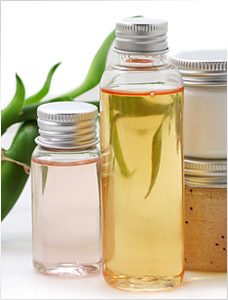 XXIII.
XXIII.
Phospholipids as adjuvants are being used for a variety of emulsifying and dispersing applications. They are fully natural, non-toxic additives with various physico-chemical properties. Examples are suppositories, creams and ointments, antibiotic suspensions as well as liposomes, enteral and parenteral clinical nutrition.
Two basic groups of application have emerged in the pharmaceutical sector. Phospholipids as active ingredients, having an effect on biochemical metabolic functions and phospholipids as adjuvants, in which they play an important part by virtue of their physico-chemical properties.
Pharmacological effects of phospholipids have been studied in phosphatidyl-choline and phosphatidylserine. A number of double-blind controlled studies are available and drugs or nutritional supplements are on the market.
Health Food
Lecithin, but especially their active ingredients, the phospholipids have a more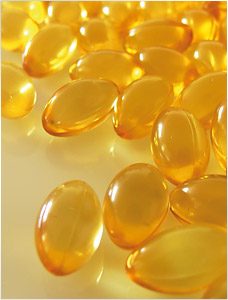 than 70 years’ history as prominent health food product for – amongst a wide range of other applications – cholesterol control, liver support and mental performance.
than 70 years’ history as prominent health food product for – amongst a wide range of other applications – cholesterol control, liver support and mental performance.
A lot of clinical studies have been done demonstrating effects that Phospholipids can enhance cardiovascular health due to a reduction of the blood cholesterol level. Phosphatidylcholine helps promoting cell protection in general, especially the protection of liver cells. They can be used preventively and therapeutically to treat liver disorders, particularly resulting from poisoning, alcohol abuse or chronic infection, and can be part of a convalescence program.
Phosphatidylcholine is a natural and highly bioavailable precursor of choline and thus of the synthesis of the neurotransmitter acetycholine. Increasing the rate of synthesis is associated with an improvement of memory and physical performance. The highly bioavailable choline is a substance which has shown to reduce elevated homocysteine levels, a substance which, besides cholesterol and some other parameters, is another risk factor for cardiovascular diseases.
Phosphatidylserine is a nutrient for the brain’s nerve cells; it supports concentration and memory functions and alleviates stress symptoms. It helps to maintain brain health and improves cognitive performance.
Common forms of lecithin health food products are liquid lecithin for soft or hard gel capsules, granules for direct oral consumption or to sprinkle over foods like yoghurt or muesli, lecithin powder for chewable tablets or powder drinks.
Margarine or oil
Due to its specific properties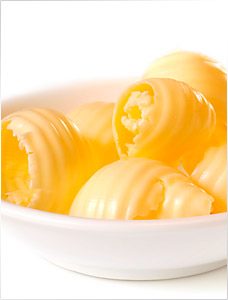 soy lecithin is widely used in margarine applications. In frying margarines, it is not only used as emulsifier, but also for its anti-spattering characteristics. Lecithin promotes the browning due to its interaction with proteins; it improves the aroma, avoids sediment sticking to the pan, keeping particles dispersed and limits foam formation. Spattering during frying is caused by the explosion of water droplets. During frying water is released from the emulsion. Water droplets are not being emulsified anymore and will coalescence and become bigger.
soy lecithin is widely used in margarine applications. In frying margarines, it is not only used as emulsifier, but also for its anti-spattering characteristics. Lecithin promotes the browning due to its interaction with proteins; it improves the aroma, avoids sediment sticking to the pan, keeping particles dispersed and limits foam formation. Spattering during frying is caused by the explosion of water droplets. During frying water is released from the emulsion. Water droplets are not being emulsified anymore and will coalescence and become bigger.
The bigger droplets will sink to the bottom of the frying pan and come into contact with the hot pan bottom. This will heat up the water droplet to such a degree that it explodes, producing the spattering of fat. The lecithin in a frying margarine will emulsify the water droplets, avoiding coalescence, keeping the droplets small, facilitating fast evaporation before reaching the hot pan bottom and avoiding explosion of water droplets. In margarine for baking applications, lecithin improves the elasticity of the margarine and its baking properties.
Release Agent
Pan, mold and belt release, food separation and industrial release application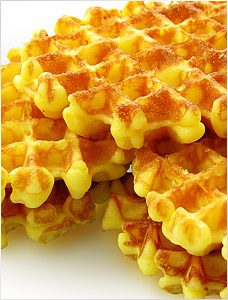
Release agents are used in all kinds of food and technical applications. Sticking of food products or burned pieces on pans, tins, molds and belts are a common burden in bakery and confectionary applications. Release agents are also used for removal of sticking materials from hot or cold surfaces of moulds and pans. Or it can be the substance that prevents sticking of products to each other, like slices of cheese. The dosage on oil basis varies between 5 to 15%.
Due to its amphoteric behavior (lecithin possesses both positive and negative charges and contains both hydrophobic and hydrophilic groups), lecithin can interact between polar and non-polar materials, like in pan release and lubricants. The lecithin molecules form a barrier between the food product and the pan, mold or belt. An interface is formed between the non-polar oil release product/food product and the polar groups of the pan/mold or belt.
Pan and mold release
Lecithin improves the anti-sticking and release characteristics of the food product out of the pan and mold. It forms an interaction barrier between the food product and the metal surface.
The lecithin is used in different formulations like:
1.Pure low viscous lecithin compounds
2.Oil/lecithin mixtures
3.Pump and aerosol sprays: oil, lecithin, propellant
Next to these formulations, it can also be an emulsion of water and oil. Deoiled lecithin is an excellent lecithin to make an O/W emulsion for release/non sticking cooking spray. Fluid lecithin improves the heat-resistant and provides a reduction in the darkening process during heating. The release agents can directly be applied on the cooking surfaces or used in the food grinders, extruders, cutters. Lecithin can also be incorporated in the food formula to encourage mold release.
Continuous cooking / freezing belt release
Oily and aqueous formulas with lecithin are developed for better release, non-sticking of the food from the belt. This layer will also control the formation of the final shape and dimensions of the end product, when food products are extruded from the dough mass on the belt: e.g. biscuits. The lecithin systems are also used for a better cleaning and rinsing of the belt. Examples of applications are: Fried, baked, pre-cooked or marinated products, like meat products, breaded products, pizza, biscuits, snacks or dehydrated or frozen products like fruits and vegetables (potatoes, and fries).
Food release, separation agent
Cheese and meat products have varying moisture levels and are stored under different conditions of temperature and humidity. These conditions provoke sticking of slices of cheese or meat to each other or to the cutting knives, wires, grinders and extruders. Low viscous lecithin can be used as a non-sticking aid and forms a barrier between the sliced and shredded products.
Technical product release
In addition to food applications, lecithin can also be used as release component in technical applications. Based on the same principle of creating a barrier between the end product and the mold, lecithin is used in e.g.: release of car tires out of their molds or release of concrete out of its formwork. Applied in asphalt road technology for better tire release
Convenience Food
Consumers appreciate convenience. Therefore dry food powders have gained 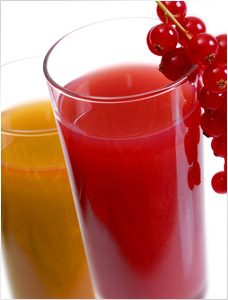 a permanently increasing market share because of their advantage of separating production from the location of consumption, to reduce transportation cost and to keep the products bacteriological stable.
a permanently increasing market share because of their advantage of separating production from the location of consumption, to reduce transportation cost and to keep the products bacteriological stable.
These products are very convenient for the end user, provided the reconstitution into water, milk or juice is without problems. Reconstitution means wetting, sinking and dispersing of the powdered food product. In cases where the fat content (esp. free surface fat) is too high or the particle structure is too fine then the addition of lecithin as a problem solver can be extremely helpful.
Instant products should be free flowing, rapidly soluble, easily wettable and quick to disperse when adding water or other liquids. Typical instant powders include dried milk products, cocoa and chololate drinks, soups and sauces, as well as protein powders. Common instantizing challenges are either poor wetting due to particle structure or presence of fat or rapid gelling at the particle surface, which coats the particle with an impermeable surface and prevents the powder from sinking.
The specific surface-active properties of lecithin improve the wettability characteristics of these powders significantly when coated with lecihtin (dosage 0.1 – 2%). Lecithin also maintains the stability of the instantizing properties over long periods of time under a variety of storage conditions.
